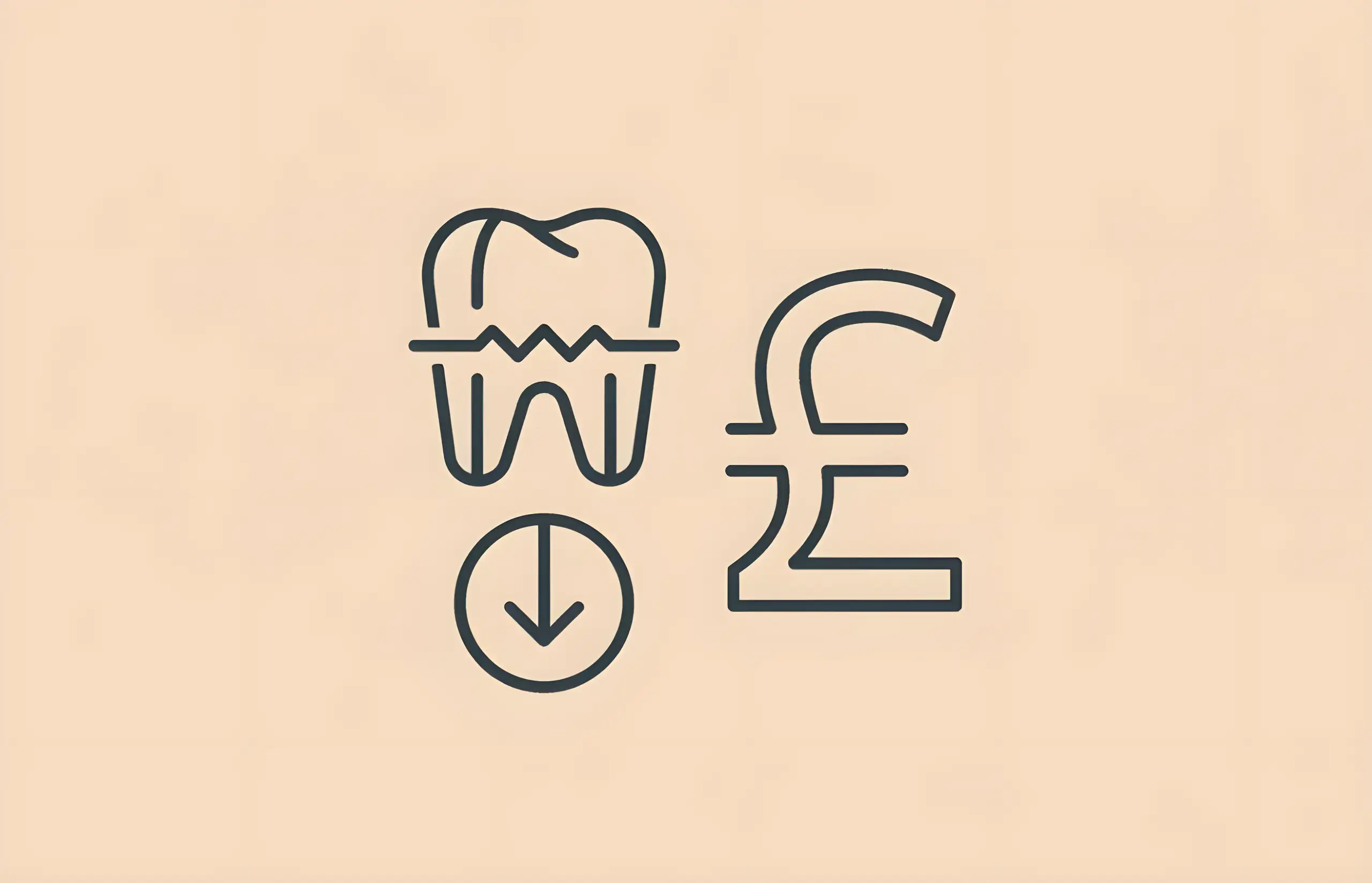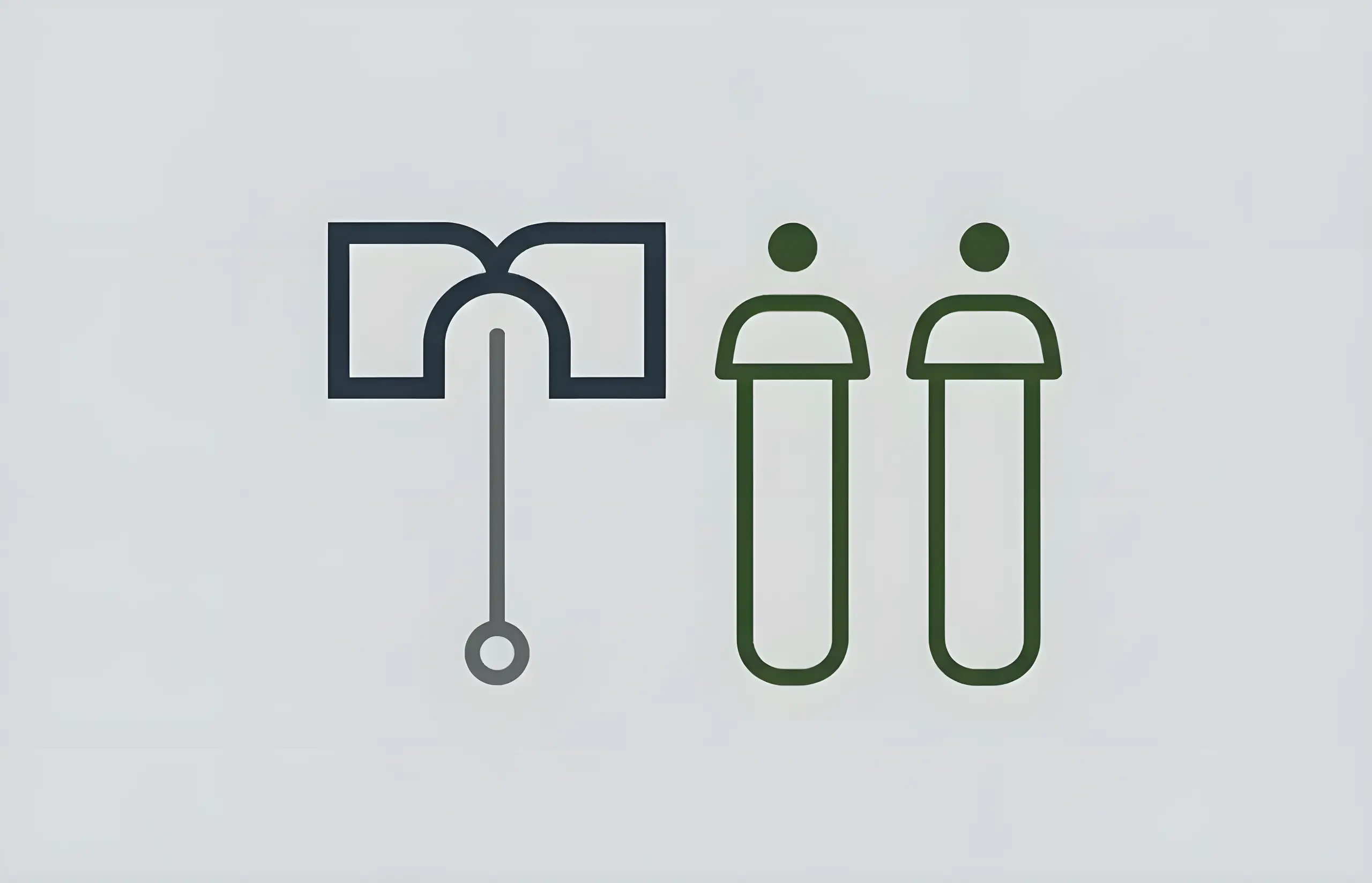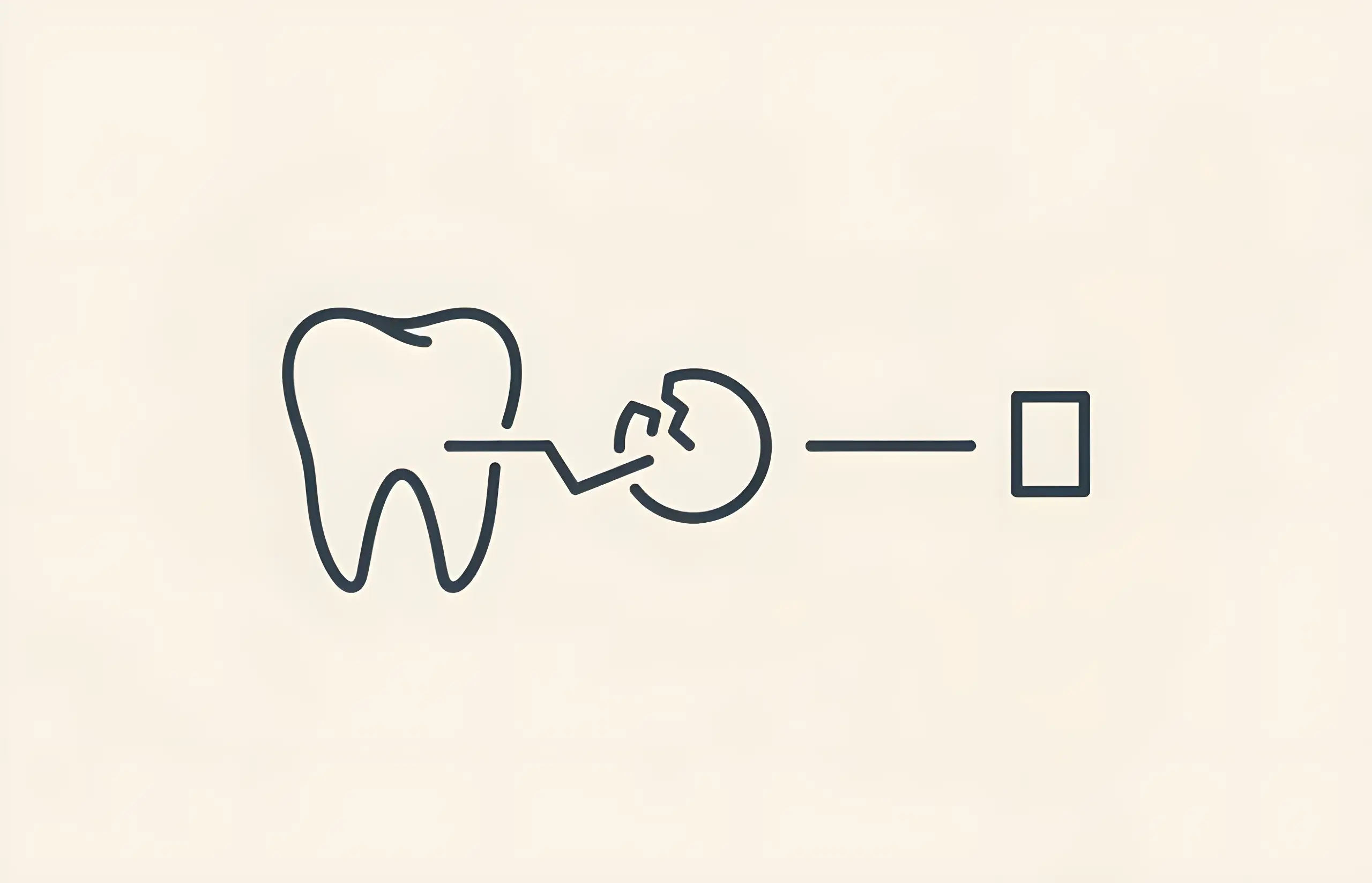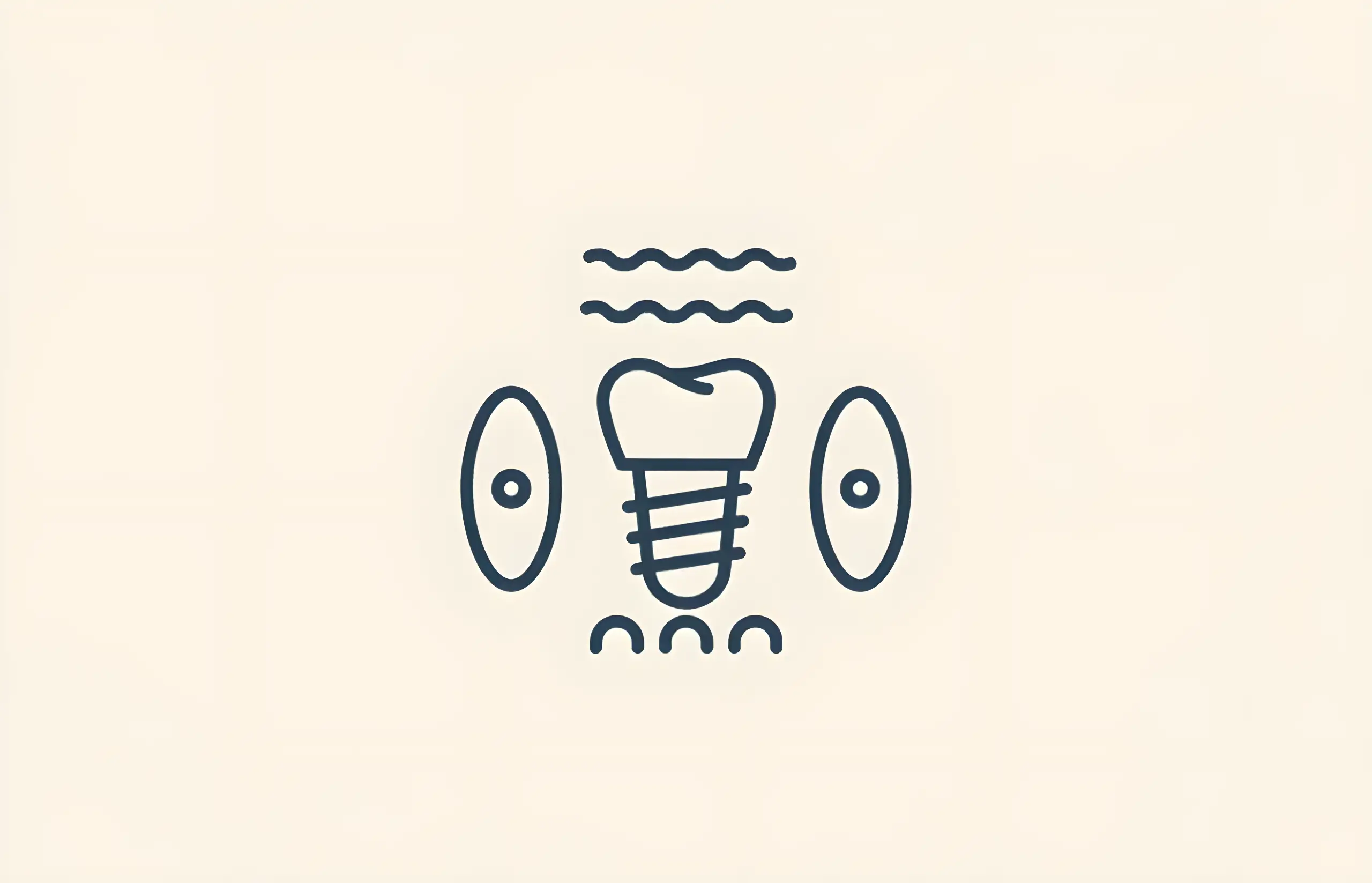NHS orthodontic treatment provides essential dental care for children and young people who need braces to correct tooth alignment and bite problems. Understanding eligibility criteria, what's covered, and what to expect helps families navigate the NHS orthodontic system effectively.
Research demonstrates exceptional outcomes with NHS orthodontic care. A 2020 study published in the Journal of Orthodontics found that 96% of patients reported overall satisfaction with NHS orthodontic treatment, with 87% stating they would have treatment again if needed and 91% saying they would recommend it to a friend.
This comprehensive guide covers NHS braces eligibility, the IOTN assessment system, costs, waiting times, treatment outcomes, and alternatives for those who don't qualify.
NHS Orthodontic Treatment Overview
The NHS provides orthodontic treatment for children and teenagers under 18 who meet specific clinical criteria. Unlike dental check-ups and routine care, orthodontic treatment requires assessment by an orthodontist (a dentist with specialist training in tooth alignment and bite correction).
Who Provides NHS Orthodontic Treatment
NHS orthodontic care is delivered by:
- Specialist orthodontists in hospital dental departments
- Specialist orthodontic practices with NHS contracts
- Specialist community dental services in some areas
General dentists cannot provide NHS orthodontic treatment—they can only refer patients to orthodontic specialists for assessment.
What NHS Orthodontic Treatment Includes
When accepted for NHS treatment, the following are provided:
- Initial orthodontic assessment and diagnosis
- Treatment planning with full explanation of options
- Fitting of orthodontic appliances (metal braces, ceramic braces where clinically appropriate, or other appliances)
- Regular adjustment appointments throughout treatment
- Removal of appliances when treatment complete
- Retention appliances (retainers) to maintain results
- Follow-up appointments during retention phase
Research shows that treatment effectively addresses the most common pre-treatment concerns: tooth alignment (89% of patients), embarrassment about smiling (63%), and confidence eating in front of others (87%).
Index of Orthodontic Treatment Need (IOTN)
The IOTN is a validated clinical tool used to assess orthodontic treatment need and determine NHS eligibility. Developed specifically for prioritizing NHS resources, it ensures treatment goes to those with genuine clinical need.
Two Components of IOTN
1. Dental Health Component (DHC)
The DHC assesses the functional and dental health impact of malocclusion using a 5-grade scale:
Grade 5 – Very Great Need:
- Impeded eruption of teeth (except third molars) due to crowding, displacement, or supernumerary teeth
- Extensive hypodontia with restorative implications
- Increased overjet greater than 9mm
- Reverse overjet greater than 3.5mm with reported masticatory and speech difficulties
- Defects of cleft lip and palate and other craniofacial anomalies
- Submerged deciduous teeth
Grade 4 – Great Need:
- Increased overjet 6-9mm
- Reverse overjet greater than 3.5mm with no masticatory/speech difficulties
- Reverse overjet 1-3.5mm with recorded masticatory and speech difficulties
- Anterior or posterior crossbites with greater than 2mm discrepancy between retruded contact position and intercuspal position
- Severe contact point displacements greater than 4mm
- Extreme lateral or anterior open bites greater than 4mm
- Increased and complete overbite with gingival or palatal trauma
Grade 3 – Moderate (Borderline Need):
- Increased overjet 3.5-6mm with incompetent lips
- Reverse overjet 1-3.5mm
- Anterior or posterior crossbites with 1-2mm discrepancy
- Contact point displacements 2-4mm
- Lateral or anterior open bite 2-4mm
- Deep overbite complete on gingival or palatal tissues but no trauma
Grade 2 – Little Need:
- Increased overjet 3.5-6mm with competent lips
- Reverse overjet 0-1mm
- Anterior or posterior crossbite with less than 1mm discrepancy
- Contact point displacement 1-2mm
- Anterior or posterior open bite 1-2mm
- Increased overbite greater than or equal to 3.5mm without gingival contact
Grade 1 – No Need:
- Extremely minor malocclusions including contact point displacements less than 1mm
Research validating the DHC found an intraclass correlation coefficient of 0.87 (95% CI = 0.56-0.96), demonstrating excellent reliability. The DHC showed 100% sensitivity for identifying treatment need, though with lower specificity (19%), meaning it effectively identifies all who need treatment but may include some borderline cases.
2. Aesthetic Component (AC)
The AC uses a scale of 10 standardized photographs (grade 1 being most attractive, grade 10 least attractive) rated by a lay panel. The patient's dental appearance is matched to the closest photograph.
- Grades 1-4: No aesthetic need
- Grades 5-7: Moderate aesthetic need
- Grades 8-10: Definite aesthetic need
NHS Eligibility Criteria
Children and teenagers under 18 qualify for free NHS orthodontic treatment if they have:
- IOTN DHC Grade 4 or 5 (great or very great need based on dental health)
OR
- IOTN DHC Grade 3 (moderate need) combined with AC grade 6 or above (aesthetic component indicating moderate to severe aesthetic concerns)
Research shows that approximately one-third of 11-12 year olds in the UK have objective treatment need at IOTN grades 4-5, indicating substantial demand for NHS orthodontic services.
Examples of Qualifying Conditions
Typically qualify for NHS treatment:
- Severe crowding preventing proper tooth eruption
- Large overjet (protruding upper teeth) greater than 6mm
- Severe crossbites affecting jaw function and tooth wear
- Impacted teeth (particularly canines) requiring surgical exposure and alignment
- Significant reverse overjet (underbite) greater than 3.5mm
- Cleft lip/palate requiring orthodontic management
- Missing teeth with orthodontic space management needed
- Severe deep bite causing trauma to gums or palate
Typically do NOT qualify for NHS treatment:
- Mild crowding without functional impairment
- Minor spacing between teeth
- Slight overbite without trauma
- Cosmetic concerns without meeting AC threshold
- Mild rotations or misalignments (IOTN grades 1-2)
The assessment is clinical and objective, not based on personal preference or parental desire for cosmetic improvement alone.
Getting NHS Orthodontic Treatment
The Referral Process
Step 1: Dentist Assessment
- Your regular NHS dentist examines your child's teeth during routine check-ups
- They monitor dental development and bite relationships
- If potential orthodontic need identified, dentist discusses referral
- Dentist makes written referral to NHS orthodontic service
Step 2: Orthodontic Assessment Appointment
- First appointment with orthodontist (specialist)
- Full examination of teeth, bite, jaw relationships, facial profile
- IOTN assessment (DHC and AC grades recorded)
- X-rays and photographs taken if needed
- Discussion of findings and whether treatment is appropriate
Step 3: Treatment Decision
- If IOTN criteria met: Patient accepted for NHS treatment
- If IOTN criteria not met: Treatment not available on NHS (private option discussed)
- If borderline: May be placed on monitoring list for reassessment as development continues
Step 4: Waiting List
- If accepted, patient joins treatment waiting list
- Priority given based on clinical need and age
- IOTN grade 5 cases with functional problems may be prioritized
- Waiting times vary by area (see below)
Step 5: Treatment Starts
- Appointment for appliance fitting
- Regular adjustment appointments (typically 4-8 weeks apart)
- Treatment duration usually 18-24 months
- Retention phase follows active treatment
Waiting Times
NHS orthodontic waiting times vary significantly across the UK:
Initial Assessment Waiting Time:
- Typically 3-12 months after referral
- Urgent cases may be seen sooner
- Varies by demand in your area
Treatment Waiting Time:
- Can range from a few months to over 2 years
- Depends on local orthodontic capacity
- IOTN grade 5 with functional problems may be prioritized
- Some areas have longer waits due to high demand
Factors Affecting Waiting Times:
- Local orthodontic service capacity
- Number of qualified orthodontists with NHS contracts
- Population density and demand
- Funding allocations in your area
Contact your local NHS orthodontic service for current waiting times specific to your region.
NHS Orthodontic Treatment Costs
For Children and Teenagers Under 18
Free NHS orthodontic treatment when meeting IOTN eligibility criteria:
- £0 cost for assessment
- £0 cost for active treatment (braces)
- £0 cost for retention appliances
- £0 cost for adjustment appointments
- £0 cost for emergency repairs
This makes NHS orthodontics exceptionally valuable for qualifying families. Private orthodontic treatment costs typically range from £2,000-£6,000, representing substantial savings.
For Adults (18 and Over)
NHS orthodontic treatment for adults is extremely limited and only available in exceptional circumstances:
May qualify if:
- Orthognathic (jaw) surgery required for severe skeletal discrepancy
- Cleft lip and palate requiring orthodontic management
- Severe trauma requiring orthodontic treatment as part of reconstruction
- Other craniofacial anomalies requiring specialist care
Where available, adult NHS orthodontics falls under NHS Band 3 treatment:
- Cost: £282.80 (current NHS dental charges)
- Covers course of treatment including fittings, adjustments, and retention
For most adults, NHS orthodontic treatment is not available, and private treatment is the only option, costing £2,000-£6,000 depending on complexity and appliance choice.
Patient Satisfaction and Treatment Outcomes
Research provides compelling evidence of NHS orthodontic treatment effectiveness:
Exceptional Satisfaction Rates
The 2020 Journal of Orthodontics study of NHS patients found:
- 96% reported overall satisfaction with orthodontic treatment
- 87% would have treatment again if needed
- 91% would recommend treatment to a friend
These remarkably high satisfaction rates demonstrate that NHS orthodontic care delivers excellent outcomes that meet or exceed patient expectations.
Treatment Effectively Addresses Key Concerns
Research identified the most common pre-treatment concerns and expectations:
Pre-treatment concerns:
- Tooth alignment: 89% of patients
- Embarrassment about smiling: 63%
- Confidence issues eating in front of others
Patient expectations:
- Improved confidence to smile in front of others: 72%
- Improved confidence to eat in front of others: 87%
- Improved appearance of teeth: 85%
- Reduced teasing/bullying: 63%
NHS treatment effectively addresses these concerns, leading to the high satisfaction rates observed.
Factors Associated with Satisfaction
A systematic review analyzing 2,891 patients and 464 parents found satisfaction was strongly associated with:
Positive factors:
- Perceived aesthetic outcomes (improved appearance)
- Psychological benefits (increased confidence)
- Quality of care provided by orthodontic team
Factors causing dissatisfaction:
- Longer than expected treatment duration
- Higher than anticipated pain levels and discomfort
- Difficulties with retention appliances
Importantly, research found that parent and patient satisfaction levels were strongly correlated, indicating families generally agree on treatment outcomes.
Common Side Effects and Challenges
Research on NHS orthodontic patients documented the frequency of common side effects:
During Active Treatment
Mouth soreness: 68% of patients
- Most common after adjustments
- Typically lasts 2-5 days
- Manageable with over-the-counter pain relief
- Soft foods helpful during adjustment periods
Fixed appliance breakage: 61%
- Brackets or wires occasionally break
- Requires repair appointments
- More common with hard/sticky foods
- Usually quickly resolved by orthodontist
Gingivitis/gum inflammation: 39%
- Results from inadequate oral hygiene
- Preventable with thorough brushing and flossing
- Orthodontist monitors gum health at appointments
- Reversible with improved hygiene
Other effects:
- Temporary eating difficulties (particularly hard, chewy, or sticky foods)
- Speech effects during initial adjustment (usually resolve within days)
- Increased cleaning time required
- Dietary restrictions to protect appliances
Research found that treatment most significantly impacted pain levels, eating limitations, and speech effects, though most patients adapt within the first few weeks.
Long-term Considerations
White spot lesions: Can develop if oral hygiene is poor during treatment, representing permanent enamel decalcification. Prevention through excellent brushing and fluoride use is essential.
Root resorption: Rare shortening of tooth roots can occur, though usually minimal and without functional impact.
Retention requirements: Permanent or long-term retainer wear is necessary to maintain results, which some patients find burdensome.
Prevalence of Malocclusion in Children
Understanding how common orthodontic problems are helps contextualize NHS treatment need:
Systematic Review Findings
A 2022 systematic review analyzing 123 studies of children and adolescents found:
Angle Classification Prevalence:
- Class I (normal jaw relationship): Mean 51.9% (SD 20.7)
- Class II (overbite/overjet): Mean 23.8% (SD 14.6)
- Class III (underbite): Mean 6.5% (SD 6.5)
Specific Orthodontic Features:
- Anterior crossbite: 7.8%
- Posterior crossbite: 9.0%
- Crossbite with functional shift: 12.2%
- Hypodontia (missing teeth): 6.8%
- Impacted teeth: 4.9%
- Ectopic eruption: 5.4%
UK-Specific Data
Research examining UK children found that approximately one-third of 11-12 year olds were in objective need of orthodontic treatment using IOTN criteria (grades 4-5).
The 2013 Children's Dental Health Survey of England, Wales, and Northern Ireland confirmed substantial orthodontic treatment need among 12 and 15 year olds, though not all with clinical need seek or receive treatment.
What If You Don't Qualify for NHS Treatment?
If IOTN assessment determines your child doesn't meet NHS eligibility criteria (grades 1-2, or grade 3 without sufficient AC score), several options exist:
Private Orthodontic Treatment
Private orthodontic treatment is available for those who don't qualify for NHS care or prefer not to wait:
Costs:
- Traditional metal braces: £2,000-£3,500
- Ceramic braces: £2,500-£4,500
- Lingual braces (behind teeth): £3,500-£6,000
- Clear aligners (Invisalign-type): £2,500-£5,500
Advantages:
- No waiting times
- Greater appliance choice
- More flexible appointment scheduling
- Treatment for cosmetic concerns
Payment options:
- Pay in full with discount
- Monthly payment plans (0% finance often available)
- Dental payment plans (Denplan, etc.)
Alternatives to Traditional Braces
For mild cases not meeting NHS criteria:
Invisible aligners: Clear removable trays that gradually move teeth. Suitable for mild to moderate crowding and spacing.
Cosmetic dentistry: In some cases, veneers or composite bonding can improve appearance without orthodontic treatment, though this doesn't address underlying bite issues.
Orthodontic monitoring: Some cases improve naturally as jaw growth continues. Your dentist may recommend monitoring during development.
Straightening Teeth Without Braces
While traditional braces remain the gold standard for comprehensive orthodontic correction, alternatives exist for specific situations, though none replicate the biological tooth movement that orthodontics achieves.
Types of Braces Available on NHS
NHS orthodontic treatment primarily uses clinically appropriate appliances based on treatment needs:
Fixed Braces
Metal braces: Most common NHS option
- Stainless steel brackets and wires
- Most effective for complex cases
- Durable and cost-effective
- Highly visible but most reliable
Ceramic braces: Sometimes available on NHS
- Tooth-colored brackets less noticeable
- May be provided if aesthetic concerns significant and clinically appropriate
- Functionally equivalent to metal braces
- Not guaranteed—clinician discretion based on case
Removable Appliances
Used in some cases for:
- Early intervention in younger children
- Specific bite corrections
- Pre-treatment before fixed braces
- Retention after active treatment
Functional Appliances
For growing children with jaw discrepancies:
- Help guide jaw growth
- Used before or alongside fixed braces
- Particularly for Class II cases (overjet)
The orthodontist determines the most clinically appropriate appliance for each case. Patients cannot request specific brands or types on NHS treatment—clinical need dictates appliance selection.
How Long Do You Have to Wear Braces?
Active Treatment Duration
Typical NHS treatment timescales:
- Simple cases: 12-18 months
- Moderate complexity: 18-24 months
- Complex cases: 24-36 months
Factors affecting duration:
- Severity of malocclusion
- Patient age (younger patients often respond faster)
- Patient cooperation (wearing elastics, attending appointments)
- Type of appliance used
- Individual biological response
Retention Phase
After active treatment, retention is essential to maintain results:
Retention appliances:
- Removable retainers (often worn nightly long-term)
- Fixed bonded retainers (wire bonded behind teeth)
- Combination of removable and fixed
Retention duration:
- Initially: Full-time wear (except eating/cleaning)
- Long-term: Night-time wear indefinitely
- Fixed retainers: May remain permanently
Research shows teeth have a tendency to relapse without retention, making this phase critical to maintaining NHS treatment outcomes.
How Do Braces Work?
Understanding the biological process helps explain treatment timescales and requirements:
The Science of Tooth Movement
Braces work through controlled force application that stimulates biological remodeling:
Bone remodeling process:
- Orthodontic force applied to tooth
- Pressure side: Bone resorption occurs (bone cells break down bone)
- Tension side: Bone deposition occurs (bone cells build new bone)
- Tooth gradually moves through bone toward desired position
- Process requires 21-28 days per millimeter of movement
Why treatment takes months:
- Biological processes cannot be rushed
- Too much force causes pain and tissue damage
- Controlled, gradual movement ensures healthy outcomes
- Multiple teeth moving in coordinated fashion takes time
The Role of Regular Adjustments
Appointments every 4-8 weeks allow the orthodontist to:
- Assess movement progress
- Change wire sizes/stiffness progressively
- Adjust force direction and magnitude
- Monitor oral health and hygiene
- Make any necessary repairs
Each adjustment continues the guided tooth movement toward the treatment goal.
Maintaining Good Oral Health During NHS Treatment
Research showing 39% of NHS orthodontic patients experienced gingivitis emphasizes the importance of oral hygiene during treatment:
Daily Care Requirements
Brushing:
- Minimum twice daily (ideally after every meal)
- Use fluoride toothpaste
- Brush around brackets carefully
- Angle brush to clean beneath wires
- Allow 3-4 minutes per brushing session
Flossing:
- Daily flossing essential
- Use floss threaders or orthodontic floss
- Clean between teeth and under wires
- Takes longer with braces but prevents gum disease
Fluoride:
- Use fluoride mouthwash daily
- Helps prevent white spot lesions
- Strengthens enamel during treatment
Foods to Avoid
To prevent bracket breakage (affects 61% of patients):
Avoid:
- Hard foods (nuts, hard candy, ice, popcorn kernels)
- Sticky foods (caramel, toffee, chewing gum)
- Chewy foods (bagels, tough meat)
- Biting directly into hard fruits/vegetables (cut into pieces instead)
Regular Dental Check-ups
Continue seeing your general NHS dentist for check-ups during orthodontic treatment:
- Monitor overall dental health
- Professional cleaning
- Cavity prevention and treatment
- Coordinate care with orthodontist
Making the Most of NHS Orthodontic Treatment
Research shows 96% satisfaction rates are achievable with:
Patient Cooperation
Essential for success:
- Attend all scheduled appointments
- Wear elastics (rubber bands) exactly as prescribed
- Maintain excellent oral hygiene
- Follow dietary restrictions
- Report any problems promptly
- Wear retainers as instructed after treatment
Research found that dissatisfaction correlated with longer treatment duration and pain levels—both of which can be minimized through excellent patient cooperation.
Setting Realistic Expectations
Understanding what orthodontic treatment can and cannot achieve:
Orthodontics can:
- Straighten crooked teeth
- Close gaps between teeth
- Correct bite relationships
- Improve facial profile in growing patients
- Enhance confidence and self-esteem
- Improve oral function
Orthodontics cannot:
- Change tooth size or shape (unless combined with cosmetic dentistry)
- Alter jaw size in non-growing adults (surgery may be needed)
- Guarantee lifelong stability without retention
- Work without patient cooperation
Communication with Your Orthodontic Team
Don't hesitate to:
- Ask questions about treatment plan
- Express concerns about progress or discomfort
- Request clarification on care instructions
- Discuss any difficulties wearing appliances
- Report unusual pain or problems
Research showed quality of care strongly correlated with satisfaction—good communication facilitates quality care.
Conclusion
NHS orthodontic treatment provides exceptional value for children and teenagers who meet IOTN eligibility criteria. Research demonstrates 96% patient satisfaction, with 87% saying they would have treatment again and 91% recommending it to friends.
Key takeaways:
- Free treatment for under 18s meeting IOTN grades 3-5 criteria
- IOTN assessment determines eligibility based on dental health and aesthetic components
- Approximately one-third of 11-12 year olds have objective treatment need
- Waiting times vary by region—contact local services for current waits
- Common side effects include mouth soreness (68%), appliance breakage (61%), and gingivitis (39%)
- Treatment effectively addresses alignment concerns, functional problems, and psychological impacts
- Private treatment available for those who don't qualify or prefer alternatives
The high level of satisfaction and reported change in pre-treatment concerns supports the continuation of orthodontics in the NHS. For eligible patients, NHS orthodontic care provides comprehensive, evidence-based treatment that delivers excellent outcomes.
If you believe your child may benefit from orthodontic treatment, speak with your NHS dentist about a referral for specialist assessment. The IOTN evaluation will determine eligibility objectively, and if criteria are met, your child can access high-quality NHS orthodontic care that research shows delivers exceptional patient satisfaction and improved quality of life.
For those who don't meet NHS criteria, private orthodontic options remain available, allowing all families to access tooth straightening treatment appropriate to their needs and circumstances.
Sources and References
-
[1]
Patient-reported experience and outcomes from orthodontic treatmentJournal of Orthodonticshttps://pubmed.ncbi.nlm.nih.gov/32116083/
-
[2]
Prevalence of Orthodontic Malocclusions in Healthy Children and Adolescents: A Systematic ReviewInternational Journal of Environmental Research and Public Healthhttps://pmc.ncbi.nlm.nih.gov/articles/PMC9223594/
-
[3]
Factors associated with patient and parent satisfaction after orthodontic treatment: a systematic reviewAmerican Journal of Orthodontics and Dentofacial Orthopedicshttps://pubmed.ncbi.nlm.nih.gov/26432321/
-
[4]
The Dental Aesthetic Index and Dental Health Component of the Index of Orthodontic Treatment Need as Tools in Epidemiological StudiesInternational Journal of Environmental Research and Public Healthhttps://pmc.ncbi.nlm.nih.gov/articles/PMC3166742/
All sources accessed and verified on . Medical information reviewed for accuracy and compliance with current guidelines.
Related Articles

How Much Do Adult Braces Cost?
Comprehensive Cost Analysis (£1,500-£10,000 Range, 59% Out-of-Pocket, 6.31 Months Shorter with Aligners)

How Much Do Braces Cost in the UK?
A comprehensive guide to braces costs in the UK, covering different types of braces from metal to Invisalign and their price ranges
A Guide to Ceramic Braces
Comprehensive information about ceramic braces, including how they compare to metal braces, costs, benefits, and considerations for choosing this orthodontic option

A Guide to Dental Braces for Kids
Comprehensive information about orthodontic braces for children and teenagers, including types of braces, treatment duration, costs, and oral care during treatment

The Different Types of Braces Available
Comprehensive guide to orthodontic braces including fixed, removable, lingual, Invisalign, and functional braces with cost comparisons

How Do Braces Work?
Comprehensive guide to orthodontic tooth movement including biological mechanisms of bone remodeling, treatment duration, force application, periodontal ligament response, and retention protocols

How Long Do Braces Take?
Comprehensive guide to orthodontic treatment duration including individual factors, planning stages, fitting procedures, treatment timeframes from 6 months to 3 years, and adjustment schedules

How Long Do You Have To Wear Braces?
Treatment Duration and Retention Protocols (19.9 Months Average, 13.3% Relapse Fixed Retainers)

A Guide to Invisible Braces
Comprehensive information about invisible braces (clear aligners), including benefits, effectiveness, costs, and how they compare to traditional metal braces

How to Make Your Teeth Straight Without Braces
Discover modern alternatives to traditional braces including clear aligners, at-home straightening services, surgical options, and palatal expanders

Metal Braces: A Simple Guide
Comprehensive guide to traditional metal braces for correcting misaligned teeth, including how they work, common conditions requiring braces, and modern improvements
About The Dental Guide
The Dental Guide is a trusted online resource providing evidence-based information about dental health, treatments, and procedures. Our content is created and reviewed by qualified dental professionals to help you make informed decisions about your oral health.
Our Mission
- Evidence-based dental information
- Expert-reviewed content
- Clear, accessible explanations
- Latest treatment options
- Patient-focused guidance
Editorial Standards
- GDC-registered dental professionals
- Peer-reviewed sources
- Regular content updates
- Medical accuracy verification
- Transparent authorship
Important Notice
The information on The Dental Guide is for educational purposes only and should not replace professional dental advice. Always consult with a qualified dentist for diagnosis and treatment recommendations tailored to your individual needs and circumstances.
Medically Reviewed
Reviewed by Dr. Nasim Mechoui , BDS (Bristol)
Share this article
Comments & Discussion
Have questions about dental implants? Share your thoughts or experiences.
